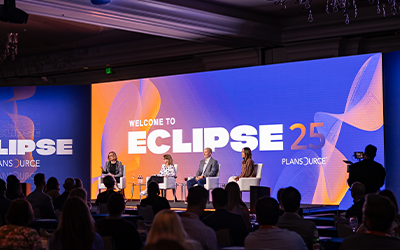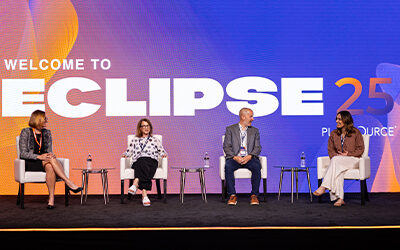How well educated are your employees on current company benefits? How are employee benefits communicated? Do you have an employee benefits education and communication strategy? These are all questions that your HR team should be evaluating on a regular basis.
A recent Aflac survey indicates that 83% of employers believe that communication, employee education and engagement are integral to overall benefits delivery and 65% rank educating employees about their benefits as a high priority. Despite this, less than 25% of companies are using technology for non-payroll HR functions, like education, benefits and communication.
And this lack of education shows … More than 60% of employees report that making sense of benefits is ‘too complicated,’ and nearly 75% report there is some part of their current coverage they don’t understand.
But enough with the stats. Want to know how your HR team can improve their benefits communication strategy? Here are 15 ways to get started.
1. Have A Communication Strategy
The first step to improving your benefits communication strategy is to actually have a benefits communications strategy! How far in advance do you begin communicating open enrollment dates and procedures? How do you announce and manage questions related to new benefits offerings? Do employees know where to go to manage benefits and answer questions?
Having a solid plan of action is crucial for success. Check out our free Open Enrollment Communications Playbook to get started!
2. Simplify Your Messaging
Understanding your audience and how to effectively communicate with them is step one of creating your benefits messaging. What are the demographics of your workplace? Will one voice suffice, or do you need to provide multiple messages across various channels? Does your workforce speak English, or will you need bilingual messaging?
These questions might seem obvious, but simplification is an often overlooked nuance of communication, particularly in a complicated field like employee benefits. Do your homework and take the time to craft simple and effective communications. Or get a headstart with these free email and text OE communication templates!
3) Invest In Technology
Are you stuck in the 90’s with an antiquated benefits enrollment process? Or worse, do you still use *gasp* pen and paper for OE? Investing in updated HR and benefits technology will not only save your department valuable time and greatly improve efficiencies across the board, but also open the doors to useful communication and education opportunities. Features to look for include easy messaging capabilities (email, text message alerts, etc.), in-system video support, live chat integration and decision support – to name a few.
4) Use Educational Videos
Benefits can be complicated and education, or lack thereof, is a huge problem. Video is a great way to educate employees on the fly when it matters the most. Not only can you provide a free benefits video library with easy to access resources that employees can reference throughout the year, you can also partner with a benefits technology provider that offers in-system video functionality. By showcasing educational videos directly within the benefits shopping experience, you can ensure that employees have easy access to the resources they need at the precise moment they need it.
5) Host Reps For Live Q&A
The best way to educate employees on specific benefits offerings? Let them hear it from the experts! Carriers and benefits brokers are happy to travel to your location to walk employees through plans and packages. Typically, we recommend an open group presentation and then time set aside for one-on-one meetings for employees who have more in-depth questions. Reach out to your carrier(s) or benefits broker prior to your OE period to discuss scheduling a visit.
6) Print Materials & Resources
Posting and distributing print materials is an easy and affordable tactic to passively remind employees of educational opportunities. Whether you want to announce your annual open enrollment dates or increase participation for an educational benefits seminar, have posters and other print materials ready to go to increase awareness and buzz for your events!
7) Get Social
Contrary to popular belief, social media can be used for more than just sharing cat videos. Employees will spend less than an hour researching and selecting benefits. How much time does the average person spend on social media? Over 90 minutes – per day!
The best way to get in front of your audience is to go where they are, and your employees are most certainly on social media. Consider setting up a private Facebook group for HR communications and using a private chat channel, like Slack, to open the communication gates. Learn more about social media for HR here.
8) Send Emails
Tried and true, email is still one of the most effective communication and education tools available to employers. The key to winning at email is to keep messages concise and informative, test your headlines to see what messaging sparks the most engagement and use a mobile-friendly email solution. Email is another communication tool that can easily be managed in-house if you are using a modern benefits solution that comes with built-in employee communications tools.
9) Schedule Text Message Alerts
It might surprise you to learn that employees actually don’t mind receiving text messages from their employer on important HR and benefits alerts. Offering a text message alert service will ensure employees receive fast and timely communications about educational opportunities. Text message alerts can easily be managed in-house if you are using an up-to-date technology provider. Be sure that your text system is ‘opt-in’ to only reach employees that want to be reached this way!
10) Offer A Benefits Website
Do your employees have a central place to access all of their benefits materials? Hosting a benefits-specific website is an affordable and effective way to provide on-demand access to important materials. This is also a great place to host your educational materials, like benefits guides and educational videos. Make sure that your benefits website is mobile-friendly and can easily be accessed and navigated across multiple device types.
11) Invest In A Benefits Mobile App
Employees don’t always have benefits questions during OE or even during normal 9-5 work hours. Instead, questions often arise in the moment when visiting a doctor or filing a claim. The best way to be helpful in the moment? Offer a benefits mobile app! By partnering with a technology provider that has fully embraced the mobile-first movement, you can provide employees with timely, relevant info on the fly via a dedicated mobile app.
12) Incentivize Education
All of this education is great, but how can you actually get employees to engage? Try gamifying the process and adding incentives to complete specific training. For example, Fujifilm integrates short, interactive games into their employee education. The games are called ‘tiles’ and are customized to focus on current initiatives. The games only take a few minutes to complete and are rolled out each morning. Employees that complete all 5 tiles in a week receive a prize. And that’s just one example of how gamification can be used for HR. Get creative and make learning fun!
13) Ask For Feedback
Do you know how well educated your employees are? Do you know how satisfied employees are with current benefits communication and education initiatives? These are simple points that can easily be uncovered via an employee benefits survey. Implement a survey annually post-OE for the best results.
14) Provide 1-on-1 Assistance
It’s time to put the ‘human’ back in human resources. One-on-one communication is an oldie but goodie when it comes to educating employees. Speaking with a real person? Crazy, we know. But, your HR staff should be readily available to answer any and all questions that might arise throughout the year. Make sure that your benefits contact is easy to reach and is a person that employees feel comfortable approaching.
15) Share Total Compensation Statements
Do your employees fully understand the full value of their compensation and benefits? Total compensation statements are a quick and easy way to effectively showcase the full value of an employee’s financial rewards and the total value of working at your organization. Statements are highly visual and easy to scan, which makes them incredibly easy to understand. Information included in total compensation statements includes an employee’s base salary (or hourly pay), bonuses, 401(k) or retirement fund contributions, insurance benefits, vacation accrued, voluntary benefits and more, which are all combined into a ‘total annual compensation’ number.
The most important takeaway? Employee benefits education should not be limited to a pre-OE scramble. Instead, embrace a year-round education strategy and open the communication channels around the clock to keep your employees up to date on the latest and greatest benefits news.
Need A Benefits Communications Partner?
If so, you’re in luck. PlanSource happens to be an expert in employee benefits education and communications. Get in touch to see how we can help you drive better awareness, engagement and HR efficiency!
Empathy, Innovation & Action: Top Takeaways from HR Leaders Who Spoke at Eclipse
Empathy, Innovation & Action:Top Takeaways from the HR Leaders Who Spoke at...
Charting the Future of PlanSource: Our Vision for What’s Ahead
Discover how PlanSource unveiled game-changing AI innovations at Eclipse 2025, transforming how HR leaders manage benefits and how employees choose them. The future of benefits starts here.
Navigating New Requirements with the Paperwork Burden Reduction Act
Navigating New Requirements with the Paperwork Burden Reduction...




